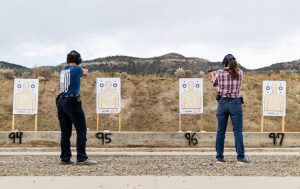Mark Cole
In his mere 53 years of life, Thomas Nelson, Jr. was a member of the Continental Congress, Governor of Virginia, General of the Continental Army and Commander-in-Chief of the Virginia army during the Revolutionary War, a wealthy planter, and father of 11.
He was educated in England, first at Cambridge and then under the private instruction of a clergyman who eventually became Bishop of London. If anyone would have been a good candidate to remain loyal to the British crown, it would have been Thomas Nelson.
Nonetheless, when the time came to choose sides, Nelson knew which side he was on. He served in the Virginia House, helped form a militia in Virginia and became its first commander. He then headed to the Continental Congress, where he signed the Declaration of Independence in 1776.
For the next few years, Nelson shuttled back and forth between his military duties in Virginia and his political duties in Philadelphia as a member of the Continental Congress.
But by 1780, Virginia had become the main theater of military operations in the revolution. The state was under siege and in a state of perpetual war. So Nelson returned to Virginia for good, where he was desperately needed. There he would fight it out for the duration of the war.
During these difficult times, Nelson was the commander-in-chief of the Virginia military, but the civil government – not being a government designed to function in a military zone – was in shambles. Drastic measures were needed. Nelson was thus elected Governor of the colony, succeeding Thomas Jefferson. This move, though extremely controversial, gave Nelson the authority to direct the entire scene in Virginia and he moved swiftly and confidently, continually building the size of the troops at his disposal and equipping them for the fight – often out of his own pocket.
Indeed, one of the major roles Nelson played in the American Revolution was not just as a general on the field of battle and the Governor of Virginia, but as a leading financier of the war effort. In 1780, when the Continental Congress asked the colonies to contribute to the war effort, Nelson personally called upon his wealthy planter friends. While none would agree to lend funds to the Continental Congress, many agreed to lend funds personally to Governor Nelson. Nelson thus became a major debtor on behalf of the Revolution.
He had, after all, pledged his life, his fortune and his sacred honor.
Eventually, Nelson would repay most of those loans himself. But that would only be after his finest hour, in the Battle of Yorktown.
Yorktown was the final battle of the American Revolution. It lasted nearly a month. And Thomas Nelson was on the battlefield the entire time.
During the battle, British troops seized Nelson’s mansion, and helped themselves to his food, his wine and his furniture. In fact, a group of British officers actually sat down for a feast while their troops labored outside on the field of battle. Meanwhile, colonial artillery men fired shells at British troops throughout Yorktown, but, out of respect and deference, also carefully avoided shelling the occupied home of General and Governor Nelson.
When Thomas Nelson discovered the irony that British officers were enjoying safety and comfort in his home, he ordered his troops to bomb his mansion. He even offered a reward to the man who hit his home first with a shell.
It didn’t take long for the colonists to interrupt the British officers’ merrymaking with artillery fire. Two of the feasting British officers were, in fact, killed when a shell ripped through the roof of Nelson’s dining hall.
General Washington went on to accept the surrender of Cornwallis at Yorktown. Though it would be more than two years before a treaty could be secured, at Yorktown American independence was won.
As for General and Governor Nelson, he was publicly and privately praised by General Washington for his service and his heroic sacrifice during the battle.
Within a month of Yorktown, as Virginia was demilitarized, Nelson resigned from the post of Governor, recognizing that for an acting General to head the civil government during a time of peace was inappropriate.
Nelson went on to liquidate his estate and financial holdings so that he could repay the loans he had taken out on behalf of the cause. But Nelson, like Carter Braxton and others, was never repaid by the United States of America and his final years were spent as a pauper.
He was the first signer from Virginia to die, in 1789.
Thomas Nelson, Jr. was buried at the foot of his father’s plot at Grace Church in Yorktown, without a tombstone. More than a century later, someone had enough decency to provide a marker which reads:
“He gave all for Liberty.”
Check out Mark’s book: Lives, Fortunes, Sacred Honor: The Men Who Signed the Declaration of Independence













